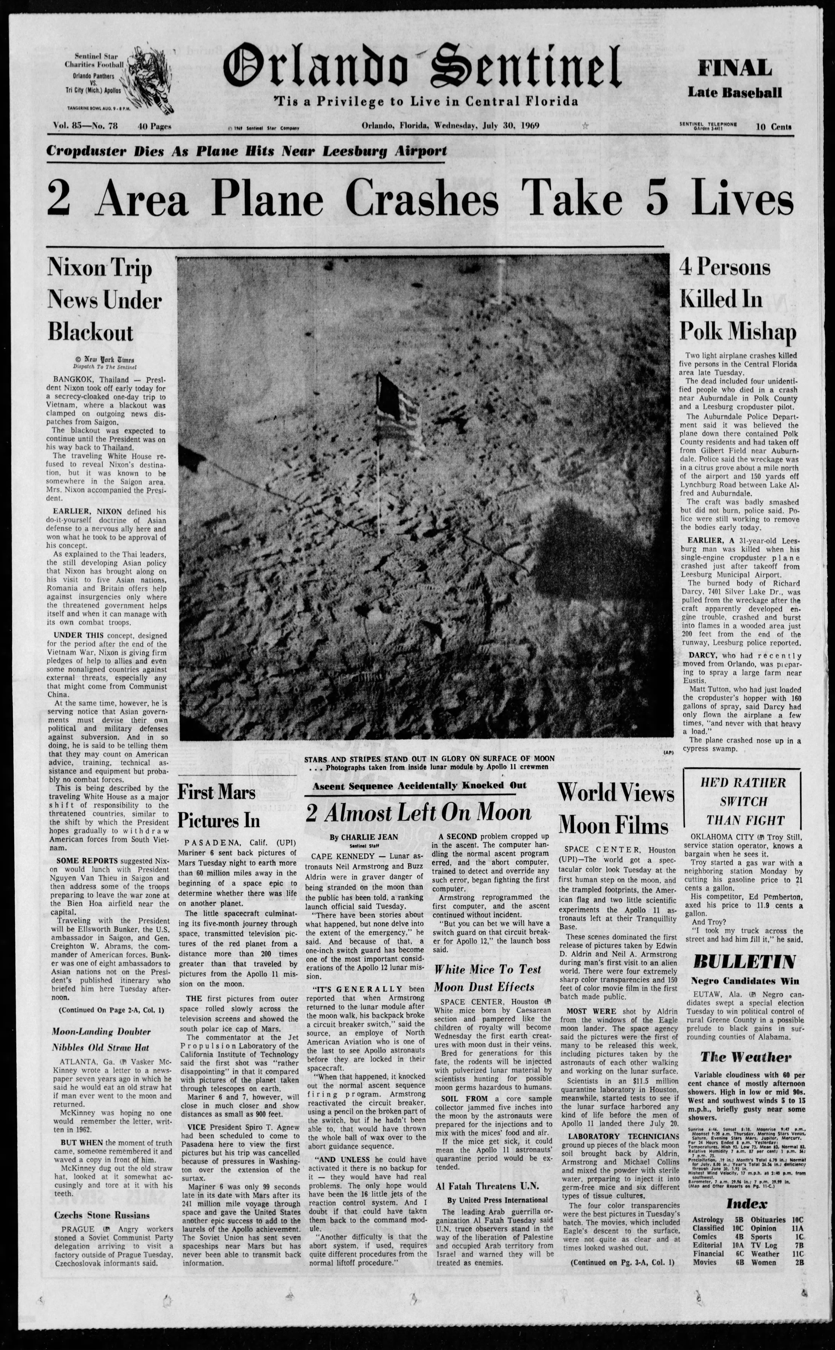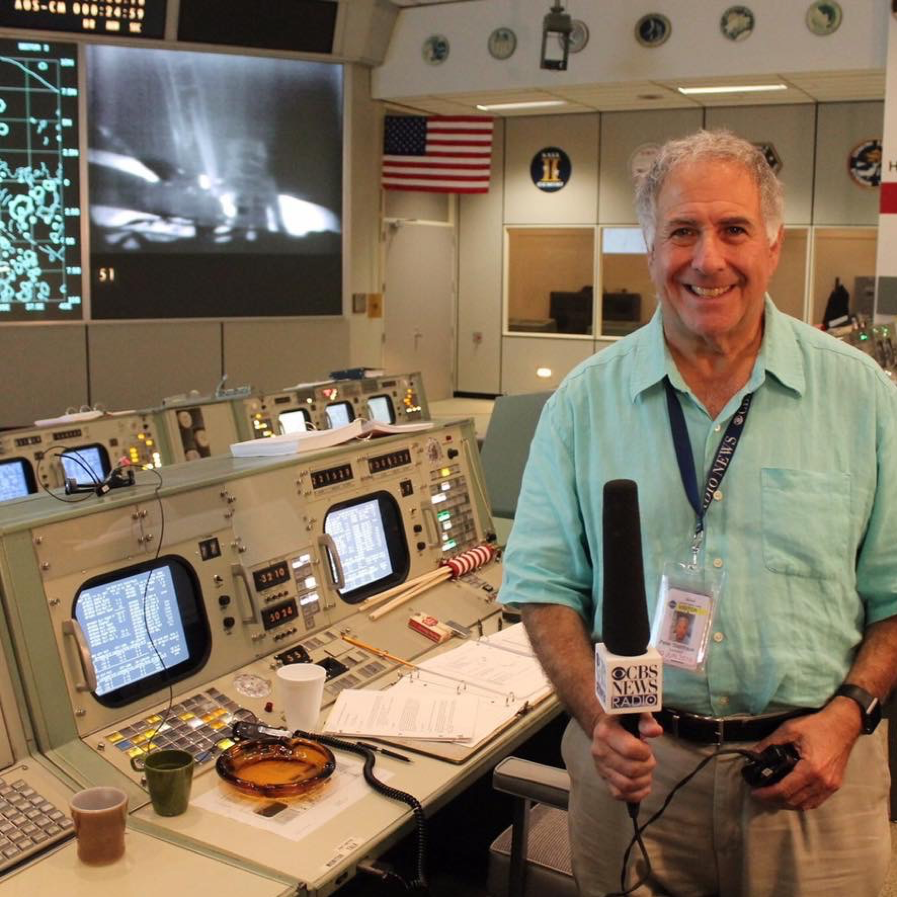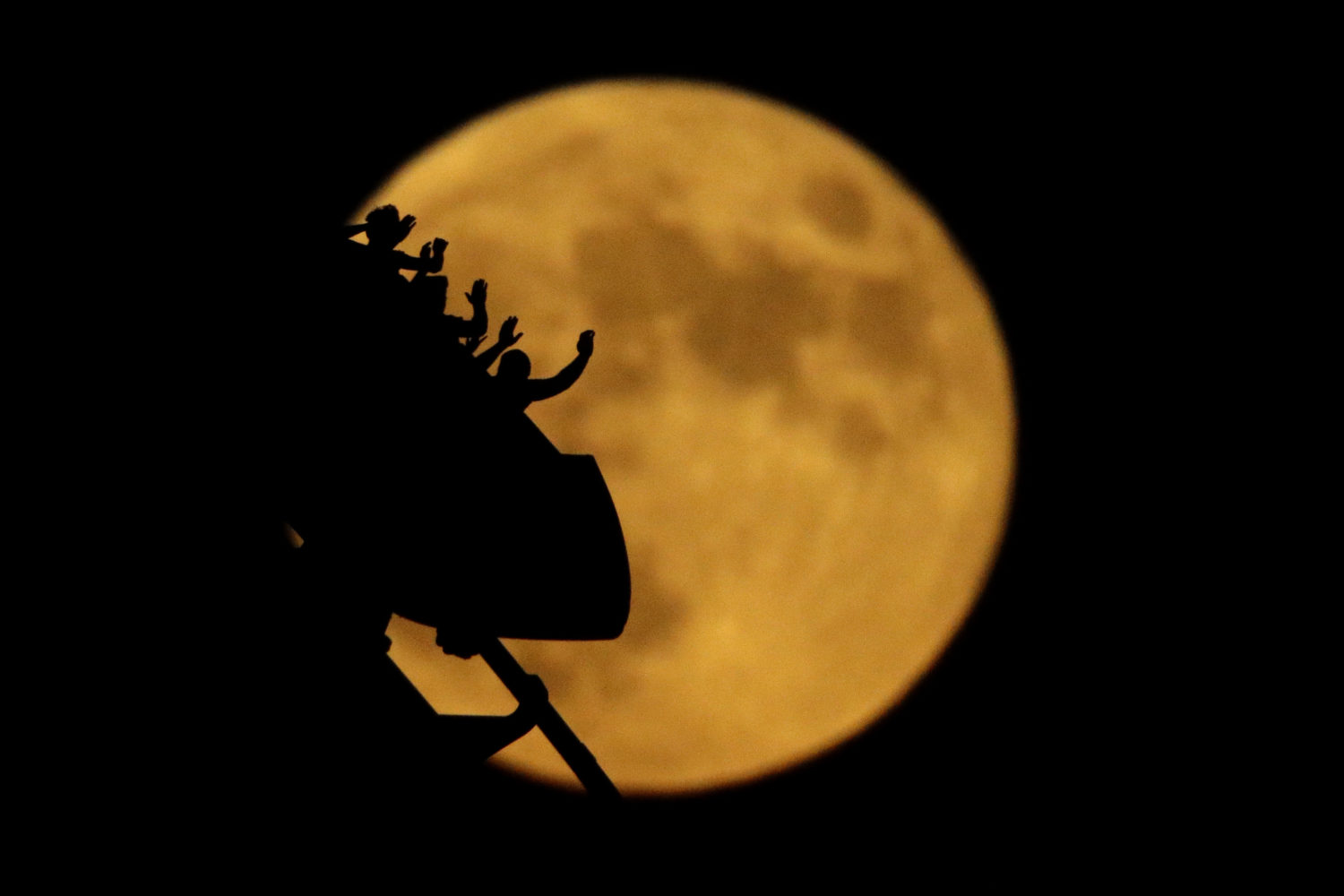A president’s murder. A civil rights leader’s assassination. A seemingly endless war.
This was framework facing America in the months up to the moon landing.
That’s why a former vice president for NBC News said that to understand what the moon landing meant to the American spirit, you have to put that night into context.
Bill Wheatley, a former executive producer for “NBC Nightly News,” said that the nation had just endured a decade of war; we buried the president who envisioned the moon landing just six years earlier.
How could Americans be ready to celebrate anything when only 15 months before the moon landing, a man with a rifle murdered the Rev. Martin Luther King Jr.? There was rioting. Robert Kennedy was shot.
The country was an emotional wreck.
But 1969 was to be a year of change. Nixon took the White House. The Beatles broke up. Woodstock and the Manson murders happened that year. It was the bloodiest year yet in the Vietnam War but by July, there appeared to be a chance for “an honorable end” to the fighting.
Television and radio journalists of the 1960s delivered the best and worst news live. Still, CBS Radio correspondent Peter King, who covers space, said some early astronauts and some inside NASA administration didn’t want TV cameras in the command modules.
“On a spacecraft, every pound you take up is a pound of something else you cannot take, “ King said. “You can only launch so much into space and the TV camera for Apollo 7 was 4.5 pounds. A lot of astronauts didn’t see the camera as a central part of the mission. They said, ‘Let us do our jobs … we are not putting on a TV show.’”
But as NASA completed one successful flight after another, the government began to see that live broadcast coverage offered a big opportunity for public relations.
“Kennedy’s goal was not the conquest of space exploration,” King said. “It was something that we could do to beat the Russians. Space, his advisers told Kennedy, was one place where they could win.”
Wheatley said, “The 1960s is when the TV newscasts went to a half hour. It demonstrated the fact that it was a big world out there and television could play a part of it.”
Lee Harvey Oswald shot President John Kennedy on live TV. The decade ended with a live TV moment of America’s moon landing triumph.
“TV solidified these roles of bring the nation together in a common experience,” Wheatley said.
Wheatley said in preparation for our conversation, he looked back in American history to try to find another unifying moment similar to the moon landing.
“I was hard pressed in the ’70s to find any. In 1986, the space shuttle Challenger explosion was the next remarkable convening of the nation again.”
The space program had the capacity to generate euphoria and agony.
“I call those ‘Where were you when?’ moments,” King said. “The space program and the coverage of it provided some key moments in people’s lives.”
Wheatley said, “The space program probably took third place or lower in what people were thinking about at the time. It was lower on the pecking order in terms of trying to build consensus. It was a series of short, successful missions.”
Wheatley said news coverage of the 1960s space program was largely supportive and even, at times, cheerleading. “To some degree it was all presumed to be necessary,” he said.
At the height, the United States spent 4.4% of the federal budget on NASA. In 1966, NASA had a budget of $5.9 billion dollars. By 1994, the U.S. was spending less than one half of a percent of the national budget on space travel, which is where the budget stands today.
“There would be much more controversy now if we had those expenditures,” Wheatley said. “But in the case of Apollo 11, it would have been hard for the media to appear to not want the astronauts to succeed.”
Wheatley said that, in retrospect, journalists may not have paid enough attention to the scientific and technical advances that would evolve from investing so heavily in space technology. The early coverage focused, instead, on the human and emotional stories of triumph over danger and the valor of facing uncertainty. But the focused research and development needed to reach the moon produced medical breakthroughs, satellite and computer technology and countless consumer items that you routinely use. From water purifiers to home insulation and artificial limbs, they were all space program spinoffs.
“During the mission, you are focused on the mission,” King said. “It is possible that we would have come up with smaller, more powerful computers, but the space program made it happen faster.”
Downplaying danger
On the day that the space shuttle Challenger exploded, I interviewed Konrad Dannenberg, one of NASA’s engine specialists who built the rocket that took mankind to the moon. Dannenberg said he was not at all surprised by the disaster. He said Americans had forgotten, if they ever knew, how dangerous space travel is. He recounted as we stood there in shock at the Marshall Flight Center in Huntsville, Alabama, just how many rockets blew up on takeoff in the early test days.
“The old saying was ‘Russians rockets go up and our rockets blow up,’” King said. “But the truth is theirs blew up, too, but ours were out in the open.”
King said when three astronauts died in a lift-off launch rehearsal in 1967, Americans started to understand the extreme risks of space travel.
“There were real concerns that John Glenn’s Mercury heat shield might have come loose and he would burn up on re-entry. In the Gemini program, the spacewalks turned out to be very very dangerous,” King said, because an astronaut became so tired he nearly didn’t make it back into the spacecraft. Gemini 8’s mission nearly cost two other lives, including Neil Armstrong’s.
Broadcast anchors who covered the space program had to be ready for anything. There was no guarantee the landing would be smooth and there was always the possibility the lunar module would not lift off. The New York Daily News even mocked up a front-page with the headline “Marooned” in case the astronauts were stranded.
On July 30, 1969, The Orlando Sentinel reported that the Apollo 11 crew was nearly stranded when Armstrong’s backpack hit and broke a circuit breaker switch that affected the sequence to fire the rockets to lift off the moon’s surface. The Sentinel headline reads “2 almost left on moon.”

“All of the networks had space units,” Wheatley said. Live coverage meant radio and TV anchors had to prepare for anything. “Anchors studied up very considerably before every launch in the ’60s. There were manuals and they contained any manner of information.”
He said the networks had compiled such manuals for live political convention coverage going back to the 1950s.
“The manuals included the history of the space program, the mechanics of the mission, the background of the astronauts, bios of the leadership of NASA … There were chapters on telemetry.”
King said the networks each developed a collection of space reporters who became household names. NBC had Jay Barbree and Roy Neal, among others, he said. “Walter Cronkite was the standard-bearer for CBS because he was a huge proponent of space coverage. He went through some space training to show people what it was like.”
Radio networks also employed space teams.
“TV was not as portable as it has become,” King said. “The ’60s was the age of the radio. It was all AM radio in those days. When a million people lined the beaches to watch the Apollo 11 liftoff, they didn’t have portable, battery-powered TVs. They listened to Reid Collins from CBS, Russ Ward for NBC, Mort Crim for ABC Radio.”
Peter King just finished reporting a half-hour special podcast. He spoke with some of the behind-the-scenes pioneers who held their breath when Apollo 11 landed with seconds left before the landing would have to be aborted. The mission controllers told King they had to settle everyone down and get back to work. King points out that mission control, in those days “had extra large ash trays.”

In his special, King also talks with a CBS producer who was in charge of a backup plan to simulate what a moonwalk might look like in case the TV cameras on the lunar lander didn’t work.
“You know, we were perhaps naive,” former CBS News researcher Mark Kramer told King. “I think most of us thought it was going to work.”
But Kramer said CBS had outfitted an old airplane hangar with the scenery the network could use if the TV cameras on the spacecraft failed and the network needed to demonstrate what the astronauts were doing. Kramer said the network spread slag from an iron mine around the hanger floor to make it look like a lunar surface and had a space suit somebody could wear in a demonstration.
Instead, the moonwalk produced what was to that point the largest TV audience in history.
In May, President Trump said Americans should return to the moon by 2024.
Under my Administration, we are restoring @NASA to greatness and we are going back to the Moon, then Mars. I am updating my budget to include an additional $1.6 billion so that we can return to Space in a BIG WAY!
— Donald J. Trump (@realDonaldTrump) May 13, 2019
A month later, the President tweeted again; this time claiming the moon is “a part” of Mars.
For all of the money we are spending, NASA should NOT be talking about going to the Moon – We did that 50 years ago. They should be focused on the much bigger things we are doing, including Mars (of which the Moon is a part), Defense and Science!
— Donald J. Trump (@realDonaldTrump) June 7, 2019
Last week, NASA reassigned the executive in charge of the 2024 moon landing mission.
Nobody said why and newsrooms that once breathlessly reported about the program barely noticed.
Correction: This story has been updated to correct the spelling of the names of CBS News researcher Mark Kramer and radio reporter Reid Collins, and to correct the location of the photo of Peter King. We regret the errors.







